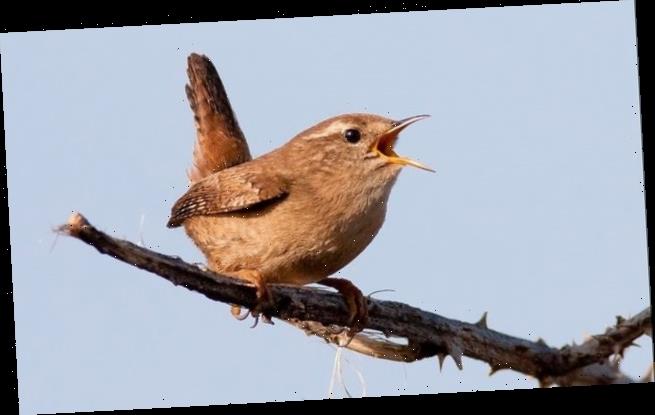Wren retains title of Britain’s commonest bird as a run of mild winters sends the number of pairs soaring to 11 million
- Thousands of volunteers helped the British Trust for Ornithology survey birds
- The wren is more numerous than the blackbird, the robin and the sparrow
- Numbers of turtle doves and waders like lapwing and oystercatcher are falling
- The results will help inform conservation policy and site management decisions
The wren has retained the title of Britain’s commonest bird as a run of mild winters has sent the number of pairs of the tiny bird soaring to around 11 million.
This figure means that the wren is more numerous than the blackbird, the robin and the sparrow, a report from the British Trust for Ornithology found.
Their last survey — which was undertaken in 2013 — also had the wren at the top of the list, but with a population of just over 8.5 million pairs.
Wren numbers are known to fluctuate with environmental conditions, and it is possible that climate change has benefited one of our smallest birds.
Scroll down for video
The wren, pictured, has retained the title of Britain’s commonest bird as a run of mild winters has sent the number of pairs of the tiny bird soaring to around 11 million
TOP SIX BRITISH BIRDS BY NUMBER
1. Wren (11 million pairs)
2. Robin (7.35 million pairs)
3. House sparrow (5.3 million pairs)
4. Wood pigeon (5.15 million pairs)
5. Chaffinch (5.05 million territories)
5. Blackbird (5.05 million territories)
Although the number of wrens has continued to rocket, not all of the UK’s bird species have been so lucky.
The turtle dove — of which there were around 75,000 pairs in 1997 — is down to just 3,600 in the latest report.
In addition, there are no longer any breeding waders in the UK with a breeding population greater than 100,000 pairs.
Both the lapwing and the oystercatcher have now fallen below this threshold for the first time.
The researchers were also surprised by the fall in numbers for the chaffinch, one of Britain’s most familiar birds.
Over the last seven years, their breeding population has fallen by 1.15 million pairs — with the cause of this decline remaining unclear.
It is estimated that, in total, there are around 85 million breeding pairs of birds in the UK — the equivalent of around over one-and-a-quarter pairs for each of us.
This figure is similar to its last estimate which was made back in 2013. There are also 20 species whose populations number more than one million pairs.
Although the number of wrens has continued to rocket, not all of the UK’s bird species have been so lucky. The turtle dove, pictured — of which there were around 75,000 pairs in 1997 — is down to just 3,600 in the latest report from the British Trust for Ornithology
‘It is great to have these latest estimates of the numbers of our birds,’ said paper author Ian Woodward of the British Trust for Ornithology.
‘Knowing how many of which species we have is important for many reasons, not least of which is the ability to make better informed decisions when it comes to conservation policy and site management.’
‘It is thanks to the thousands of volunteers that take part in a variety of bird surveys that we have the data and are able to produce these figures at all.’
The British Trust for Ornithology has conducted four bird population surveys to date — the first in 1997, followed by others in 2006, 2013 and 2020.
The full findings of the survey were published in the journal British Birds, whereas a summary of the report’s key findings can be read on the British Trust for Ornithology website.
Source: Read Full Article


